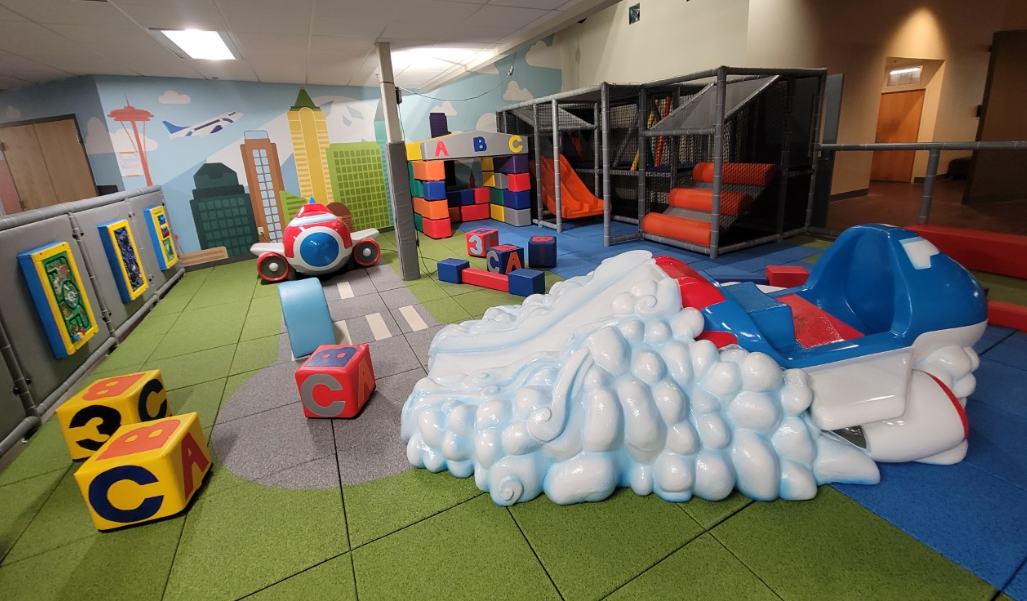Hey there! So you’ve got your budget sorted, chosen the right equipment, and now it’s time for the exciting part: installing and setting up your indoor playground. This step is crucial for ensuring that everything is safe, fun, and functional. In this guide, we’ll go through three key aspects of installation and setup: layout and equipment placement, safety signs and guidelines, and ensuring overall safety at your indoor playground.
Layout and Equipment Placement
Planning Your Space
First things first, you need to plan your space. The layout of your indoor playground will significantly impact the flow, safety, and overall experience for the kids. Here are some tips to help you plan an effective layout:
Measure Your Space: Start by measuring your available space. Knowing the exact dimensions will help you decide what equipment can fit and how to arrange it efficiently.
Create Zones: Divide your playground into different zones based on the type of activities. For example, have a designated area for toddlers, another for climbing structures, and a separate zone for interactive play panels.
Consider Traffic Flow: Ensure there’s a smooth flow of movement throughout the playground. Kids should be able to move from one activity to another without running into obstacles or each other.
Leave Open Spaces: Make sure to include open spaces where kids can run around freely. This helps prevent overcrowding and reduces the risk of accidents.
Equipment Placement
Once you have a general idea of your layout, it’s time to place your equipment. Here are some best practices for equipment placement:
Anchor Large Structures: Ensure that large structures like climbing walls and slides are securely anchored to the ground or walls. This prevents them from tipping over during play.
Safety Zones: Leave enough space around each piece of equipment to create a safety zone. For example, slides should have a clear area at the bottom where kids can land safely.
Soft Play Areas: Place soft play areas for toddlers away from more challenging equipment intended for older kids. This reduces the risk of younger children wandering into areas that might be too advanced for them.
Visibility: Arrange equipment so that it’s easy for parents and supervisors to see all areas of the playground. Good visibility helps ensure that any issues can be quickly spotted and addressed.
Theming and Aesthetics
Don’t forget about the aesthetics! A well-themed playground can create an immersive experience that kids will love. Choose colors, themes, and decorations that make the space inviting and exciting.
Consistent Theme: Stick to a consistent theme throughout the playground. Whether it’s a jungle adventure, underwater world, or outer space, consistency helps create a cohesive and engaging environment.
Interactive Elements: Incorporate interactive elements that fit your theme. For example, if you have an underwater theme, include interactive panels with fish and other sea creatures.
Bright Colors: Use bright, vibrant colors that appeal to kids. Colors can stimulate creativity and make the playground more visually appealing.
Safety Signs and Guidelines
Importance of Safety Signs
Safety signs are essential for ensuring that everyone knows the rules and stays safe while playing. They provide important information and help prevent accidents. Here’s how to effectively incorporate safety signs in your indoor playground:
Clear and Visible: Place safety signs in clear and visible locations. They should be easily readable from a distance and positioned at eye level for both kids and adults.
Simple Language: Use simple, easy-to-understand language. Avoid technical jargon and make sure the signs are written in a way that children can comprehend.
Illustrations: Include illustrations or icons on your signs. Visual aids can help convey the message more effectively, especially for younger children who may not be able to read yet.
Types of Safety Signs
There are several types of safety signs you should include in your playground. Here are some examples:
Rules and Guidelines: These signs outline the basic rules for using the playground. Common rules include no running, no pushing, and taking turns on equipment.
Age Restrictions: Clearly indicate the age range for different areas of the playground. For example, “This area is for children aged 2-5 years.”
Emergency Exits: Mark emergency exits clearly. In case of an emergency, everyone should know the quickest way to exit the playground safely.
First Aid and Emergency Contacts: Display the location of first aid kits and provide emergency contact information. This ensures that help is readily available if needed.
Customizing Your Signs
Consider customizing your safety signs to fit the theme of your playground. Themed signs can make the rules feel like part of the play experience rather than a set of restrictions. For example, in a jungle-themed playground, your safety signs could feature animals reminding kids to be safe.
Ensuring Safety at Your Indoor Playground
Regular Inspections
Safety doesn’t end once the playground is set up. Regular inspections are crucial to maintaining a safe environment. Here’s what to look for during inspections:
Check for Wear and Tear: Look for any signs of wear and tear on equipment. This includes cracks, rust, loose bolts, and any other damage that could compromise safety.
Cleanliness: Ensure that the playground is clean and free of debris. Regular cleaning helps prevent the spread of germs and keeps the equipment in good condition.
Flooring: Check the flooring for any damage. Make sure that all soft surfaces are intact and provide adequate cushioning.
Staff Training
Your staff plays a vital role in maintaining a safe playground. Ensure they are well-trained and know how to handle different situations. Here are some training tips:
First Aid: All staff members should be trained in basic first aid. This includes knowing how to handle minor injuries and when to call for emergency assistance.
Supervision: Train your staff to supervise children effectively. They should be vigilant, proactive, and able to enforce rules without being overly strict.
Emergency Procedures: Make sure your staff knows the emergency procedures for your playground. This includes knowing the location of emergency exits, first aid kits, and emergency contact information.
Parental Supervision
Encourage parental supervision at your playground. While your staff will be there to oversee the play area, parents should also be involved in keeping an eye on their children. Here’s how you can promote parental supervision:
Comfortable Seating Areas: Provide comfortable seating areas where parents can sit and watch their kids. Make sure these areas offer good visibility of the entire playground.
Signage: Use signs to remind parents to supervise their children. Simple messages like “Parents, please watch your children” can be effective.
Engagement: Engage with parents and encourage them to be active participants in their children’s play. This not only enhances safety but also creates a more enjoyable experience for families.
Emergency Preparedness
Being prepared for emergencies is a key aspect of playground safety. Here are some steps you can take to ensure you’re ready for any situation:
First Aid Kits: Place first aid kits in easily accessible locations. Make sure they are well-stocked and regularly checked.
Emergency Contacts: Display emergency contact information prominently. This should include phone numbers for local emergency services and a point of contact within your facility.
Drills: Conduct regular emergency drills with your staff. This helps ensure everyone knows what to do in case of an emergency.
Accessibility Considerations
Ensuring your playground is accessible to all children, including those with disabilities, is an important part of safety. Here are some tips:
Ramps and Accessible Routes: Make sure there are ramps and accessible routes throughout the playground. This ensures that children in wheelchairs can navigate the space easily.
Inclusive Equipment: Include equipment that is designed for children with disabilities. This can include adaptive swings, sensory panels, and other accessible features.
Clear Signage: Use clear signage to indicate accessible routes and equipment. This helps parents and children with disabilities find their way around the playground easily.
Final Thoughts
Installing and setting up an indoor playground is an exciting but challenging task. By focusing on layout and equipment placement, safety signs and guidelines, and ensuring overall safety, you can create a space that is fun, engaging, and safe for all children.
Recap:
Layout and Equipment Placement: Plan your space, create zones, consider traffic flow, and ensure equipment is securely anchored and appropriately placed.
Safety Signs and Guidelines: Use clear, visible, and simple safety signs with illustrations. Include rules, age restrictions, emergency exits, and first aid information.
Ensuring Safety: Conduct regular inspections, provide staff training, encourage parental supervision, and prepare for emergencies. Ensure accessibility for all children.
By following these steps, you can create an amazing indoor playground that provides a safe and enjoyable experience for kids and peace of mind for parents. Happy planning and setting up your indoor playground!
Got any questions or need more advice? Feel free to reach out. We’re here to help you create a fantastic playground that will bring joy to families and success to your business. Happy installing!
.png?width=160&height=96&name=logo%20(1).png)
.jpg)


